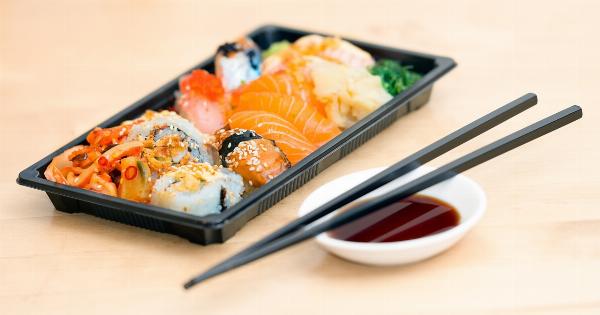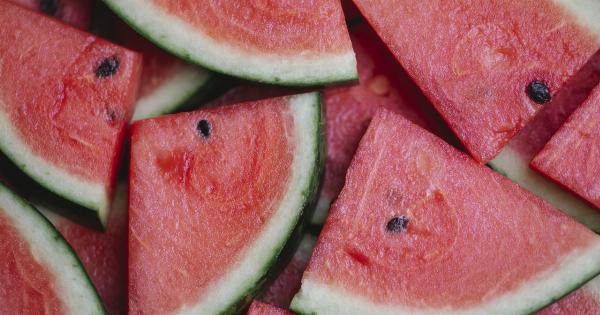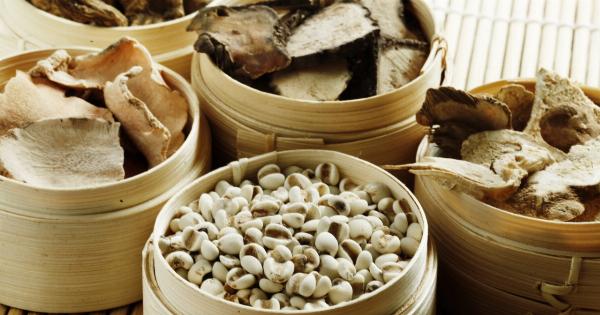Asian cuisine offers a diverse range of flavors, textures, and colors that are both delicious and nutritious. From fragrant herbs and spices to unique cooking techniques, Asian food has gained popularity all over the world.
In this article, we will explore the nutritional value of Asian food and how it can delight your taste buds.
The Health Benefits of Asian Ingredients
Asian cuisine is known for its abundant use of fresh fruits, vegetables, and herbs. These ingredients not only add vibrant colors and flavors to the dishes but also provide numerous health benefits.
Let’s take a closer look at some popular Asian ingredients and their nutritional value:.
1. Rice
Rice is a staple in many Asian countries, and it comes in various forms like white, brown, and sticky rice. It is a rich source of carbohydrates, providing us with the energy needed for our daily activities.
Additionally, brown rice is high in fiber, minerals, and vitamins.
2. Soy
Soybeans are used in different forms in Asian cuisine, such as tofu, soy milk, and soy sauce. They are an excellent source of plant-based proteins and are rich in essential amino acids.
Soy products also contain healthy fats, fiber, vitamins, and minerals.
3. Seafood
Asian cuisine is famous for its wide variety of seafood dishes. Fish like salmon, tuna, and sardines are rich in omega-3 fatty acids, which are beneficial for heart health. Shellfish like shrimp and crab are also high in protein and low in calories.
4. Herbs and Spices
Asian dishes are often seasoned with a plethora of herbs and spices. Ginger, garlic, turmeric, and chili peppers are commonly used and offer numerous health benefits.
For example, ginger has anti-inflammatory properties, while garlic has immune-boosting and antibacterial properties.
5. Green Tea
Green tea has been a traditional Asian beverage for centuries and is well-known for its health benefits. It is rich in antioxidants and compounds that promote heart health, aid in weight loss, and contribute to improved brain function.
The Nutritional Value of Asian Dishes
Asian cuisine is a medley of flavors, textures, and cooking techniques that often result in dishes with high nutritional value. Below are some popular Asian dishes and their nutritional benefits:.
1. Sushi
Sushi, a Japanese dish, typically consists of raw or cooked seafood, vegetables, and vinegar-flavored rice. It is low in calories, high in protein, and packed with omega-3 fatty acids. Sushi also contains essential minerals like iodine and selenium.
2. Stir-Fried Vegetables
Stir-fried vegetables are a staple in Chinese cuisine. They are quick to make and retain most of their nutrients due to the minimal cooking time.
Vegetables like broccoli, bok choy, and bell peppers provide a good dose of vitamins A, C, and K, as well as fiber.
3. Pho
Pho is a Vietnamese soup that is made with clear broth, rice noodles, thinly sliced meat (usually beef or chicken), and fresh herbs. It is low in fat, rich in protein, and packed with vitamins and minerals from the herbs and spices.
4. Curry
Curries are flavorful dishes that originate from countries like India and Thailand. They are made with a combination of spices, herbs, vegetables, and sometimes meat.
Turmeric, a common ingredient in curries, is known for its anti-inflammatory properties.
5. Bibimbap
Bibimbap is a popular Korean dish that consists of various sautéed vegetables, rice, and often a fried egg on top. It is a well-balanced meal that offers a variety of nutrients, including vitamins A, C, and K, as well as fiber and protein.
Asian Cooking Techniques
Asian cuisine is not only about the ingredients but also about the unique cooking techniques that result in delicious and healthy dishes. Here are some notable Asian cooking techniques:.
1. Stir-Frying
Stir-frying involves quickly cooking small pieces of meat, vegetables, and sometimes tofu in a wok or frying pan. It requires high heat and constant stirring, resulting in dishes that retain the nutrients and natural flavors of the ingredients.
2. Steaming
Steaming is a common cooking technique used in many Asian countries. It involves cooking food over boiling water, usually in a bamboo steamer or metal steamer basket.
Steaming is a healthy cooking method as it preserves the nutrients and natural colors of the food.
3. Grilling
Grilling is often used for meats and seafood in Asian cuisine. It imparts a smoky flavor to the food while allowing excess fat to drip away. Grilling can be done over charcoal, gas, or electric grills, and it is a low-fat cooking method.
Conclusion
Asian food offers a wide range of flavors, textures, and nutritional benefits. From the abundant use of fresh ingredients to unique cooking techniques, Asian cuisine presents a delightful experience for your taste buds while nourishing your body.
Incorporating Asian dishes into your diet can add variety and provide a wealth of health benefits.






























